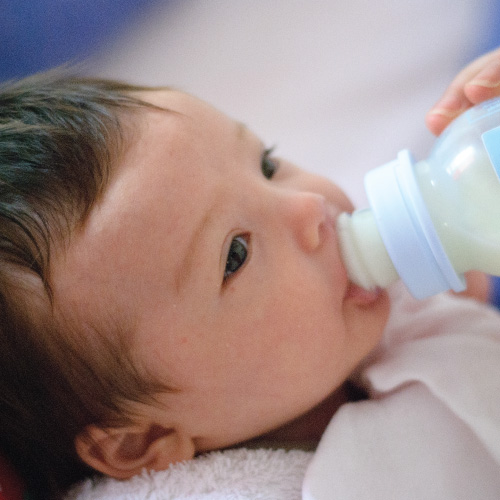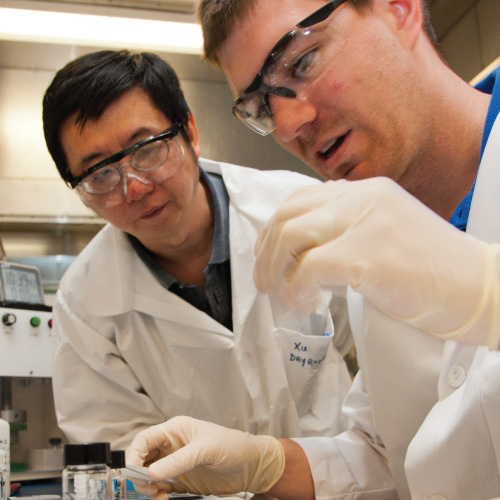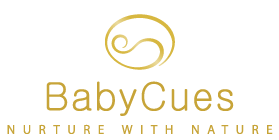Soy Formula - healthy or harmful?

Please note that this article may not be an easy read for some of you, especially if your newborn is having soy formula. Know that I am conscious of your feelings as I write this, and I do not do so lightly. In fact I have sat on this article for over six months now humming and haring about publishing it. In the end, as is often the case with my more forthright articles, I kept cycling around to the conclusion that as a mother, I would want to know. That publishing this is the best thing to do for the health of our newborns whom are often at the mercy of big conglomerates with powerful marketing strategies.
It is true that many have been silenced on the soy subject but this information is not new. It’s been known for decades and yet remained under the radar for most parents even though it is a paramount health warning! If your baby is on soy formula and you would like to chat to me about it, please feel free to book in for a ‘Let’s Chat Consultation.’
There is much debate about whether soy formula should be available for our newborns. Usually parents are steered toward soy if their baby is sensitive, or allergic to the cows’ proteins of casein and/or whey. It is also important to know that all newborns have a natural sensitivity to these proteins for the first year of life – yes, all humans initially struggle to breakdown casein and whey, or other words, dairy and this is not a problem but a normal working of our early digestive biology.
The word allergy is heard more often these days and in my experience is often wrongly used when babies are actually suffering from an overload. Please click here for further information on the symptoms of a true allergy. If your baby is not allergic then goats formula can be a good choice as the casein and whey are already naturally broken down in this formula and it still enables your baby's digestive system to process naturally. If however your baby is allergic to these proteins, casein and whey, then goats is not the option for your baby, but one must ask, is soy?
It is fair to say, like most research, there are peer reviewed papers that speak of no threat with soy, and others that inexplicably say it should not be given to our young. At the end of the day, it is your parenting choice that will decide where things sit for you. For me, after reading what is out there and tracking where some of the information comes from along with knowing that many researchers have implored our New Zealand Government to take soy off our supermarket shelves, I am inclined to say that soy formula should not be available for newborns!
The three primary problems with soy formula are:
- Phytic acid
- Trypsin inhibitors
- Phytoestrogens

Phytic acid
Present in the outer part of all seeds, phytic acid is particularly high in soybeans and is resistant to deactivation. Phytic acid blocks the absorption of critical minerals like calcium, magnesium, iron and zinc, which in itself is critical for optimal development and functioning of the brain and nervous system, especially as the brain develops in those early years of life. Researchers testing soy formula in 1967 found that soy formula caused zinc deficiency in every single infant who received it.1 Even when the diets were additionally supplemented with zinc, there was a strong correlation between phytate content in formula and poor growth. 2
CALCIUM provides the necessary components for muscle contraction, blood clotting, cell structure, maintenance of bone structure, transmission of electrical impulses, many of your baby’s enzyme reactions, and regulation of blood pressure. Pediatricians generally agree that babies require 200mg of calcium a day with most of this being stored in the bones and teeth. When there is a deficiency, calcium is then taken from the teeth, bones and muscles causing various forms of weaknesses. Calcium deficiency can lead to high blood pressure, high cholesterol, irregular heartbeat or palpitations, loss of muscle tone, tooth decay, muscle cramps and/or convulsions, colon cancer, osteomalacia (softening of bones), osteoporosis and rickets.
MAGNESIUM is the second most abundant element inside human cells and the fourth most abundant positively charged ion in the human body’, according to Carolyn Dean, the author of The Magnesium Miracle, 2007. Within the body, it serves hundreds of functions, one of these is neutralizing stomach acid thereby, moving stools through the intestine. Magnesium is a macro-mineral, which, unlike trace minerals, is needed by the body in large amounts. A deficiency of magnesium for a newborn can lead to a loss of appetite, a failure to grow, impaired development, muscular irritability, hallucinations, mental confusion, generalized weakness and flaccidity in the body. Occasional spasticity and rigidity in the body can also be present as can muscular tremors, twitches, as well as sleep apnea – a condition where breathing stops suddenly with a rapid increase in pulse rate.
IRON’S main role is to combine with one of the proteins to form haemoglobin. As your baby breathes in, the oxygen in their lungs seeks out the iron in haemoglobin, forming oxyhaemoglobin. This is moved around the body by the blood cells and the oxygen is released where it is needed to transform sugars into energy. Babies are born with iron stored in their bodies and, because they grow rapidly, infants and children need to absorb an average of 1 mg of iron per day. Iron deficiency, otherwise known as anaemia, brings tiredness, lethargy, shortness of breath, palpitations, dizziness and light-headedness. While soy formula has been iron-fortified and calcium enriched, phytic acid stands in its way of ideal absorption.
Trypsin Inhibitors
Trypsin inhibitors are large proteins that are found in soybeans. These proteins must be destroyed by cooking at high levels of heat and even when this is done, a small amount will remain. These low amounts have been found to prevent normal growth in rats and inhibit digestion and absorption of nutrients producing serious gastric distress, reduced protein digestion and deficiencies in amino acid uptake. Studies on animals have also found that diets high in these proteins can cause enlargement and pathological conditions of the pancreas, including cancer.3 Again, I repeat that I do not share this information lightly!

Phytoestrogen
A Lancet study showed that the daily exposure to estrogen-imitating chemicals for infants who consume soy formulas was 6-11 times higher than adults consuming soy foods.5
A study published in the Biology of Reproduction’s Papers-in-Press in 2012 suggests that exposure to estrogenic chemicals in the womb or during childhood has the potential to negatively affect a women’s fertility as an adult.6
A study on phytoestrogen was held by four New Zealand scientists with the results published in Volume 108 of the New Zealand Medical Journal in 1995.7 After testing the soy-based formulas, the New Zealand researchers found that the measurements of two phytoestrogens (daidzein and genistein) were two to three times greater than amounts required to disrupt the menstrual cycle of pre-menopausal women. They estimated that an infant exclusively fed soy formula receives the estrogenic equivalent (based on body weight) of at least five birth control pills per day.
In 1992, Swiss researchers also found this to be the case stating that 100 grams of soy protein provided the estrogenic equivalent of the Pill.8
The authors of the New Zealand study, including a Dr Fitzpatrick, called for routine sales of soy formulas to be stopped or that physicians and parents be informed.7 The New Zealand Ministry of Health declares this about soy formula:
Breast milk is the best food for babies. Dairy based infant formula is the next best choice. Under the advice of a health practitioner, soy based infant formula may be recommended as a substitute for a dairy based infant formula for infants with cows' milk allergy or intolerance, or lactose intolerance. However, up to 40% of infants who are allergic to cows' milk will also be allergic to soy.9

Ironically, while saying 'Under the advice of a health practitioner', the Ministry still allows soy formulas to be readily available in supermarkets, and to be purchased with, or without advice. They also do not mention that there are now other formula's that are indeed a safer option for newborns and infants that have a cow’s milk intolerance or lactose intolerance, and here I am talking a true allergy and true lactose intolerance. Far too often these days newborns and infants are wrongly being diagnosed with these when in actual fact they have dairy overload and lactose overload which can be healed naturally.
‘A Dr Donaldson advises that soy-based infant formula should not be used as the first choice even in cases when medically indicated such as for the management of infants with proven cow’s milk sensitivity, lactose intolerance, galactokinase deficiency or galactosaemia. “As an alternative to soy-based products, the more appropriate hydrogenised protein formulas are available and can be prescribed.” Hydrogenised or elemental baby formula is where the protein has been broken down to smaller particles, essentially into amino-acids, making it suitable for infants and children with cow’s milk allergy, multiple food protein intolerance, and a range of other food allergies.’10
“The Scientific Advisory Committee on Nutrition (SACN), another independent advisory body, has advised that there is no particular health benefit associated with the consumption of soy-based infant formula by infants who are healthy (no clinically diagnosed conditions). SACN also advised that there is no unique clinical condition that particularly requires the use of soy-based infant formulas.”11
Impact on Thyroid Hormones
In regards to thyroid hormones and the impact on foetal brain development, researchers at Cornell University Medical College showed that the ‘frequency of feedings with soy-based formulas in early life was significantly higher in children with autoimmune thyroid disease.’12 Symptoms of autoimmune thyroid disease include weight gain, fatigue, difficulty in getting pregnant, joint and muscle pain, constipation, and paleness or puffiness of the face.
Aluminium Toxicity
As an aside, in 1996, the American Academy of Paediatricians issued a statement on aluminium toxicity in infants and children, and discussed the relatively high content of aluminium in soy based formulas. Although the aluminium content of human milk is 4 to 65 ng/mL,13 that of soy protein based formula is 600 to 1300 ng/mL.14 According to the American Academy of Pediatrics website15 the toxicity of aluminum is traced to increased deposition in bone and in the central nervous system, particularly in the presence of reduced renal function in preterm infants and children with renal failure. Additional potential sources of aluminum include total parenteral nutrition solutions, renal dialysis fluids, and aluminum-containing antacids. Because aluminum competes with calcium for absorption, increased amounts of dietary aluminum from isolated soy protein-based formula may contribute to the reduced skeletal mineralization (osteopenia) observed in preterm infants and infants with intrauterine growth retardation.16
The biggest exporter of soy is the USA with exports worth US$21 billion in 2009-10 according to the American Soybean Associations website17. A portion of this is turned into soy baby formula and Euromonitor International18 estimates that New Zealand parents bought close to NZ$2 million worth of soy formula in 2010. That is compared with US$600 million in the US and close to ¥800 million in Japan. Soy products are found throughout Asia, but scientists and historians stress that the first to use soy formula were Westerners. They say the myth that soy formula has been around for centuries in places in Asia and thereby can be considered safe has no basis in reality.10

‘Dr Fitzpatrick, a researcher on the New Zealand study notes that although soy has been a wider part of the traditional adult Asian diet for centuries, there the use of soy was different in two ways. “Number one; they didn’t eat a lot. Number two; their soy products were manufactured completely differently. They would treat it for years; sometimes they would ferment it for three years, which broke down a lot of the toxins, including oestrogens.” Dr Fitzpatrick says the way the Western soy industry makes soy products in its factories is completely different. “They get the soybean and they squash it and the milk comes out of it, then they separate the oil from the milk and what they do then is extract the protein from the milky stuff and then dry it, and end up with this white powder. “And then they take this white powder and stick it in food and they do this in a day or two, so, they don’t give it the attention that the Asian people did when they were making it. It is all very fast, very quick and a completely different form, a completely different type of soy. It is called isolate soy protein.”10
More reading on this subject
https://soygrowers.com/learn/soybean-leadership-college/
http://aut.researchgateway.ac.nz/bitstream/handle/10292/4598/EvguenievaE2.pdf?sequence=5
http://www.westonaprice.org/health-topics/soy-and-the-brain/
https://www.mercola.com/article/soy/avoid_soy2.htm
http://articles.mercola.com/sites/articles/archive/2000/04/09/soy-research-update.aspx
http://www.ssr.org/sites/ssr.org/files/uploads/attachments/node/112/2012-05-02plantestrogenpr.pdf
- Pfeiffer CC, Braverman ER, Zinc, the brain and behavior. Biol Psychiatry1982 Apr;17(4):513-32.
- http://www.westonaprice.org/health-topics/soy-and-the-brain/
- Rackis, Joseph J. et al., "The USDA trypsin inhibitor study. I. Background, objectives and procedural details", Qualification of Plant Foods in Human Nutrition, vol. 35, 1985.
- US Soyfoods Directory. http://www.soyfoods.com/nutrition/AbsorptionMetabolism.html. Accessed January 23, 2012.
- http://www.thelancet.com/journals/lancet/article/PIIS0140-6736(96)09480-9/abstract)
- http://www.ssr.org/sites/ssr.org/files/uploads/attachments/node/112/2012-05-02plantestrogenpr.pdf
- Irvine, C. et al., "The Potential Adverse Effects of Soybean Phytoestrogens in Infant Feeding", New Zealand Medical Journal May 24, 1995, p. 318.
- Bulletin de L'Office Fédéral de la Santé Publique, no. 28, July 20, 1992.
- New Zealand Ministry of Healthhealth.govt.nz/search/results/soy%20formula Publication - 02 November 2005
- http://aut.researchgateway.ac.nz/bitstream/handle/10292/4598/EvguenievaE2.pdf?sequence=5
- https://www.parliament.nz/resource/mi-nz/48DBSCH_SCR3948_1/3abd27e4390b9d658600e550da075ea2b648b8cc
- (Fort P, Moses N, Fasano M, Goldberg T, Lifshitz F, Breast and soy-formula feedings in early infancy and the prevalence of autoimmune thyroid disease in children.J Am Coll Nutr 1990 Apr;9(2):164-67.
- American Academy of Pediatrics, Committee on Nutrition. Aluminum toxicity in infants and children.Pediatrics.1996: 97 (3):413–416
- Burrell SM, Exley C. 'There is (still) too much aluminium in infant formulas'. Keele University, Staffordshire, UK.
- http://pediatrics.aappublications.org/content/101/1/148#ref-32
- Koo WWK, Kaplan LA(1988) Aluminum and bone disorders with specific reference to aluminum contamination of infant nutrients. J Am Coll Nutr. 7:199–214.
- https://soygrowers.com/
- http://www.euromonitor.com/
First image Jerome Decq – flicker.com, https://creativecommons.org/licenses/by/2.0/
3rd Image U.S. Army https://www.flickr.com/photos/rdecom/, https://creativecommons.org/licenses/by/2.0/


